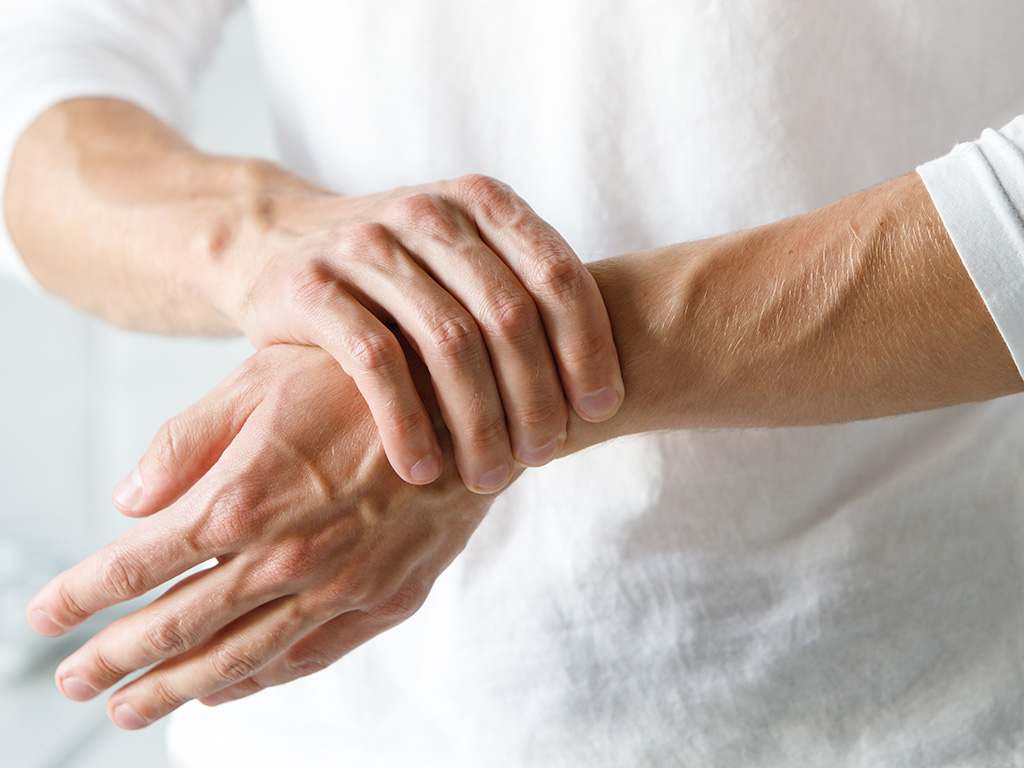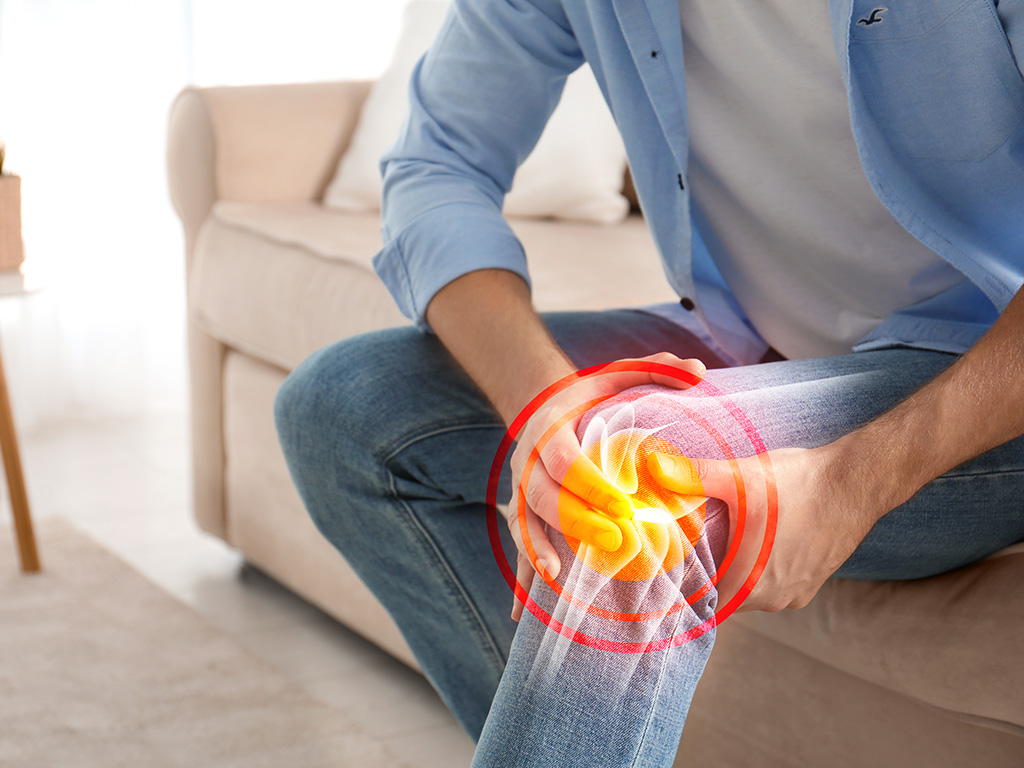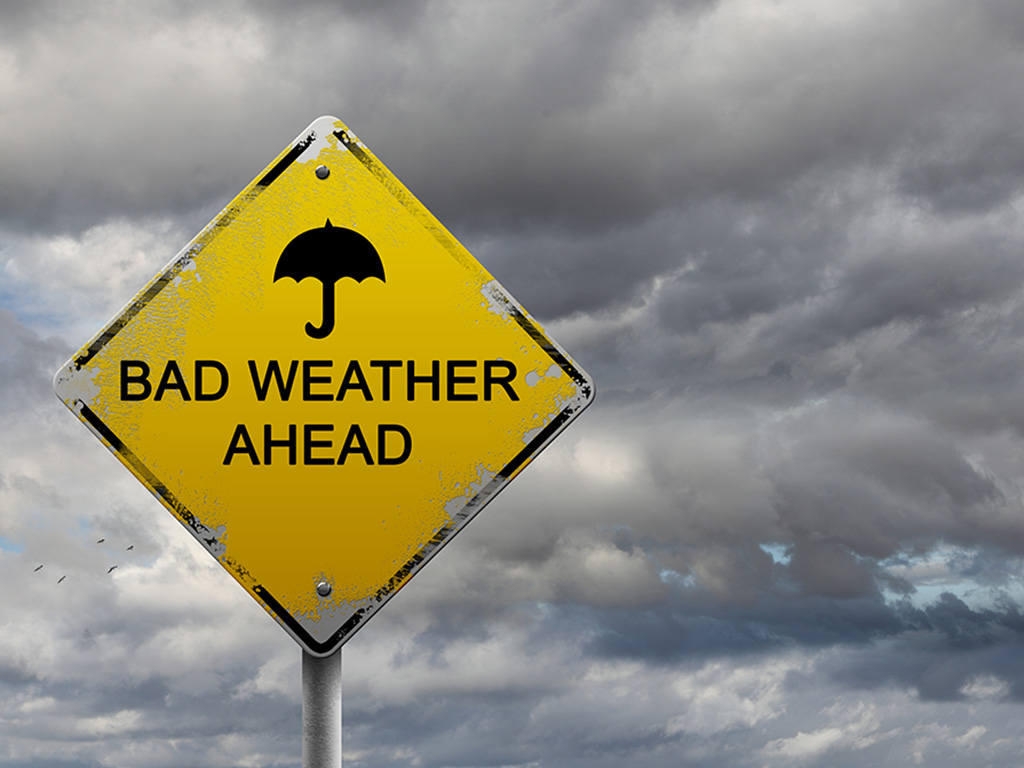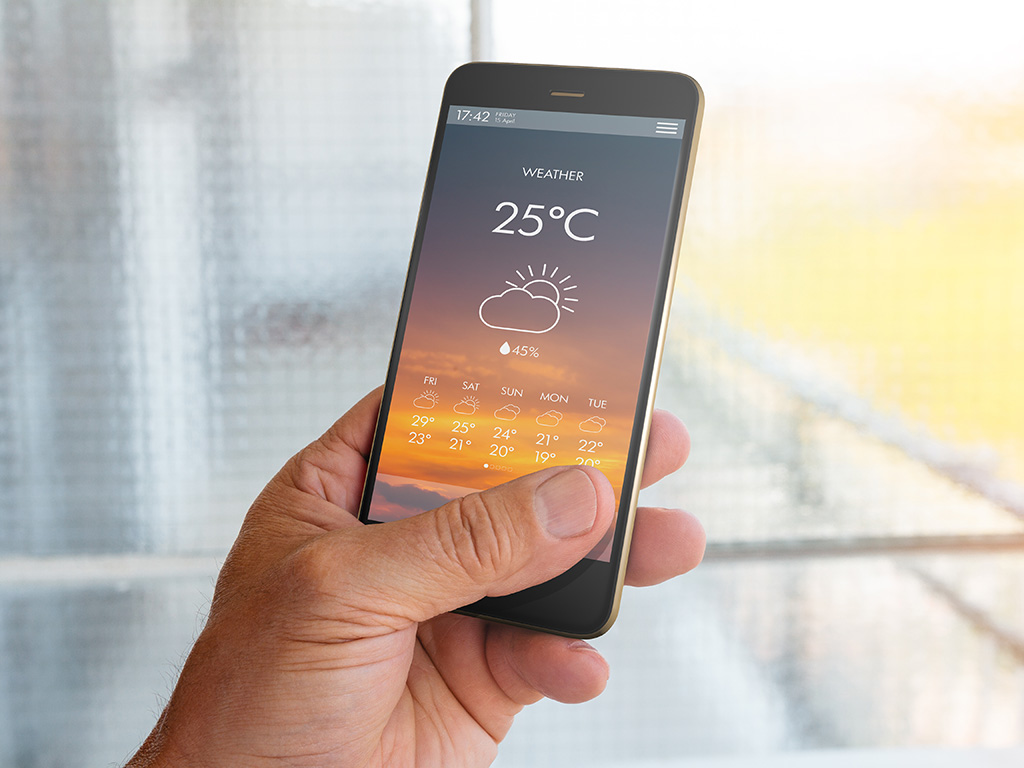Chronic pain is a common situation affecting many millions of individuals all over the world. It shows itself as lasting or coming back again and again, continuing for more than three months. This kind of pain can come from different sources like arthritis, fibromyalgia, or migraines. Recent research has shown unexpected connections between the weather and how strong people with long-term pain feel their discomfort, helping us understand this complicated issue better.
The connection between weather and long-lasting pain is not straightforward. Things like changes in atmospheric pressure, levels of moisture in the air, shifts in temperature, and cold conditions can influence how often people experience chronic pain and how severe it is. Grasping these links is useful for people to control their symptoms and change their everyday routines as needed.
What to Look Out For

- Chronic pain affects more than 1.5 billion people worldwide and is the most common cause of long-term disability in the United States.
- Weather conditions such as barometric pressure changes, humidity, temperature fluctuations, and cold weather can have an impact on chronic pain.
- Barometric pressure changes can affect joint pain and pain management.
- Humidity can aggravate arthritis symptoms, especially in individuals with rheumatoid arthritis.
- Temperature fluctuations can impact fibromyalgia, a chronic pain syndrome.
- Cold weather is associated with increased pain sensitivity, particularly in the nervous system.
- Rainy days may be linked to joint pain and weather-induced migraines.
- Weather-induced migraines are influenced by the nervous system and can be triggered by changes in weather conditions.
- Scientific studies support the connection between weather and chronic pain, providing evidence for the weather-pain connection.
Exploring the Surprising Connections Between Weather and Chronic Pain

Lately, scientists have been giving more attention to studying the way changes in the weather affect long-lasting pain. They have done a lot of research trying to find out if things like changes in temperature, how much moisture is in the air, shifts in air pressure and cold temperatures can make a difference on how often or how strong this kind of steady pain feels for people.
Many experts think the weather can change how our body feels pain and touches our nerves, making the pain feel more intense for those already suffering with chronic pain. Those with long-term pain might lessen their suffering and better their life if they learn about this connection. Understanding this link helps people control their pain better. When individuals suffering from chronic pain realize this connection, they can reduce their suffering and improve the quality of their life.
How Barometric Pressure Changes Affect Chronic Pain

When the barometric pressure falls, it can affect long-term pain in the joints. This is because atmospheric pressure, which is the weight of air around us, might make people with continuous pain feel more intense aches. When the weather is wet or there is a storm coming, many people feel more pain and swelling. This happens because changes in the air pressure affect fluids in our body and around our joints.
Individuals with chronic pain should pay attention to weather predictions and prepare ahead when changes in barometric pressure happen. They might need to change how they handle their pain, maybe use warmth or cooling treatments, and try relaxation methods when there is a drop in barometric pressure.
The Role of Humidity in Aggravating Arthritis Symptoms

Humidity, which is the amount of moisture present in the air, has been found to play a role in aggravating arthritis symptoms, especially for those with rheumatoid arthritis. High humidity can lead to increased swelling and stiffness in the joints, making movement much more painful and difficult. The exact reasons why humidity affects arthritis symptoms are not fully understood by doctors and scientists, but it is believed that the moisture in the air, or lack thereof, can contribute to inflammation and joint discomfort.
Managing chronic pain when you’re around fluctuating humidity involves monitoring the humidity levels in your area and making adjustments to your lifestyle. This may include using air conditioning or dehumidifiers to control indoor humidity, avoiding excessive exposure to humid environments outdoors, and doing gentle exercises and stretches to maintain joint flexibility.
Temperature Fluctuations and Their Impact on Fibromyalgia

Temperature fluctuations, particularly rapid changes in temperature, have been found to have an impact on fibromyalgia, a chronic pain syndrome characterized by widespread musculoskeletal pain and tenderness. Individuals with fibromyalgia may experience an increase in pain symptoms during extreme temperature changes, such as transitioning from a warm environment to a cold one or vice versa.
What Temperatures Impact Fibromyalgia?

The exact mechanisms by which temperature fluctuations affect fibromyalgia are not fully understood, but it is believed that the changes in temperature can trigger the activation of pain receptors and exacerbate pain sensitivity in individuals with fibromyalgia.
Managing chronic pain in relation to temperature fluctuations involves dressing appropriately for the weather, layering clothing to maintain a comfortable body temperature, and using heating pads or ice packs to alleviate pain during temperature changes.
Cold Weather and Its Association with Increased Pain Sensitivity

Cold weather has long been associated with increased pain sensitivity, particularly in individuals with chronic pain conditions. The cold temperatures can constrict blood vessels, reduce blood flow to the extremities, and increase muscle tension, leading to increased pain perception.
Other Conditions and Cold Weather

Individuals with conditions such as arthritis, fibromyalgia, or neuropathic pain may experience a worsening of their symptoms during colder months. Managing chronic pain in relation to cold weather involves keeping warm through appropriate clothing, using heating pads or warm baths to alleviate pain, and practicing relaxation techniques to reduce muscle tension.
Rainy Days and Joint Pain: Is There a Link?

Many individuals with chronic pain, particularly those with joint pain, report a correlation between rainy days and increased pain intensity. While the exact mechanisms behind this link are not fully understood, several theories suggest that changes in atmospheric pressure, temperature, and humidity during rainy weather may contribute to joint discomfort and inflammation.
Research conducted by the National Institutes of Health has shown that changes in weather conditions, including rainy days, can trigger weather-induced migraines, which are often accompanied by joint pain. Understanding the link between rainy days and joint pain can help individuals with chronic pain better prepare for pain flare-ups and develop strategies to manage their symptoms during inclement weather.
Understanding the Science Behind Weather-Induced Migraines

Weather-induced migraines are a specific type of headache that is triggered by changes in weather conditions. These migraines are thought to be influenced by the nervous system, specifically the trigeminal nerve, which is responsible for transmitting pain signals in the head and face.
The exact mechanisms by which weather changes trigger migraines are not fully understood, but it is believed that fluctuations in barometric pressure, temperature, and humidity can lead to changes in blood flow to the brain and activation of pain pathways.
Understanding the science behind weather-induced migraines can help individuals with chronic pain, particularly those prone to migraines, better anticipate and manage their symptoms during weather changes. This may involve taking preventive medications, practicing relaxation techniques, and keeping a headache diary to track weather-related triggers.
Delving Deeper into Weather-Related Pain Triggers

In addition to the specific weather conditions discussed above, there are various other pain triggers associated with changes in weather. Scientific studies have explored the connections between weather and chronic pain, providing valuable insights into the weather-pain connection. These studies have highlighted the influence of factors such as air pollution, wind speed, and sunlight exposure on pain perception and intensity.
Personal testimonies from individuals with weather-sensitive chronic pain further emphasize the impact of weather changes on their quality of life and mental health. By delving deeper into these weather-related pain triggers, we can gain a better understanding of the diverse ways in which weather conditions can affect chronic pain.
Scientific Studies Supporting the Weather-Pain Connection

Scientific studies have provided evidence supporting the connection between weather and chronic pain. Researchers have conducted studies to examine the impact of various weather conditions, such as temperature, humidity, and barometric pressure, on pain perception and intensity. These studies have demonstrated correlations between certain weather patterns and increased pain symptoms in individuals with chronic pain conditions.
For example, a study published in the Journal of Pain Research found that higher temperatures and low barometric pressure were associated with increased pain intensity in individuals with fibromyalgia. Another study published in the journal Pain Medicine reported a link between high humidity and increased pain severity in individuals with rheumatoid arthritis.
These scientific studies contribute to our understanding of the weather-pain connection and provide valuable insights for individuals with chronic pain in managing their symptoms.
Personal Testimonies: Living with Weather-Sensitive Chronic Pain

Personal testimonies from individuals with weather-sensitive chronic pain provide a firsthand account of the impact weather conditions can have on their daily lives. Many individuals report a correlation between changes in weather, particularly temperature fluctuations and rainy days, and an increase in pain intensity and frequency.
These personal testimonies highlight the challenges faced by individuals with weather-sensitive chronic pain and emphasize the importance of proactive pain management strategies. From making lifestyle adjustments to seeking medical intervention, individuals living with weather-sensitive chronic pain share their experiences and insights, providing support and understanding for others facing similar challenges.
By sharing personal testimonies, individuals with weather-sensitive chronic pain contribute to the growing body of knowledge surrounding the weather-pain connection and inspire others to find effective ways to manage their symptoms.
Managing Chronic Pain in Relation to Weather Changes

Managing chronic pain in relation to weather changes involves a proactive approach that combines pain management strategies, weather predictions, and lifestyle adjustments. By staying informed about weather forecasts and understanding the impact of weather conditions on their symptoms, individuals with chronic pain can take steps to mitigate the effects of weather-related pain flare-ups.
Tips for preparing for weather-induced pain flare-ups include practicing relaxation techniques, using heat or cold therapy, and maintaining a healthy lifestyle. Incorporating weather predictions into pain management plans can help individuals anticipate and prepare for potential changes in pain symptoms. Lifestyle adjustments, such as maintaining physical activity and optimizing indoor environments, can also help alleviate weather-related pain.
Tips for Preparing for Weather-Induced Pain Flare-Ups

Preparing for weather-induced pain flare-ups involves adopting proactive strategies that can help individuals with chronic pain manage their symptoms more effectively. Some tips for preparing for weather-induced pain flare-ups include:
- Stay informed about weather forecasts and pay attention to changes in barometric pressure, humidity, and temperature.
- Practice relaxation techniques, such as deep breathing exercises, meditation, and guided imagery, to help reduce stress and ease pain.
- Use heat or cold therapy, such as heating pads or ice packs, to alleviate pain during periods of weather changes.
- Maintain a healthy lifestyle by eating a balanced diet, getting regular exercise, and getting enough sleep.
- Stay hydrated and drink plenty of water to help maintain joint and muscle health.
- Consider using assistive devices, such as braces or splints, to provide support and reduce pain during weather changes.
- Consult with a healthcare provider for personalized advice and recommendations for managing weather-induced pain flare-ups.
Incorporating Weather Predictions into Pain Management Plans

Incorporating weather predictions into pain management plans can help individuals with chronic pain anticipate and prepare for potential changes in pain symptoms. By staying informed about upcoming weather conditions, individuals can make adjustments to their pain management strategies and take preventive measures to minimize the impact of weather-related pain flare-ups.
Some ways to incorporate weather predictions into pain management plans include:
- Keeping a pain diary to track patterns between weather changes and pain intensity.
- Utilizing weather apps or websites that provide detailed forecasts, including information on barometric pressure, temperature, and humidity.
- Discussing weather-related pain triggers with a healthcare provider and developing a customized pain management plan that takes weather conditions into account.
- Adjusting medication schedules or dosages as recommended by a healthcare provider based on anticipated weather changes.
By incorporating weather predictions into pain management plans, individuals with chronic pain can proactively manage their symptoms and improve their overall quality of life.
Lifestyle Adjustments to Mitigate Weather-Related Pain

Making lifestyle adjustments can help individuals with chronic pain mitigate the impact of weather-related pain. By adopting strategies that promote overall health and well-being, individuals can improve their resilience to weather changes and reduce the severity of pain symptoms.
Some lifestyle adjustments to consider for weather-related pain include:
- Maintaining physical activity and regular exercise to improve strength, flexibility, and overall pain management.
- Optimizing indoor environments by controlling temperature and humidity levels to create a comfortable and pain-friendly space.
- Practicing stress management techniques, such as mindfulness meditation, deep breathing exercises, and engaging in activities that promote relaxation.
- Getting adequate rest and sleep to support the body’s natural healing processes and minimize pain sensitivity.
- Following a balanced diet that includes anti-inflammatory foods to help reduce inflammation and support overall pain management.
By making these lifestyle adjustments, individuals with chronic pain can enhance their ability to cope with weather-related pain and improve their overall quality of life.
Expert Insights on Weather and Chronic Pain

Expert insights from medical professionals, including rheumatologists and pain specialists, provide valuable perspectives on the relationship between weather and chronic pain. These experts offer a deeper understanding of the mechanisms by which weather conditions can influence pain perception and intensity.
By sharing their knowledge and expertise, medical professionals contribute to the development of effective strategies for managing weather-related pain and improving the quality of life for individuals with chronic pain. Their insights help individuals navigate the complexities of weather-related pain and make informed decisions about their pain management approaches.
Medical Professionals Weigh In: Understanding the Link

Expert views from medical professionals, such as rheumatologists and pain specialists, give us important understanding about why weather might impact chronic pain. They tell that alterations in barometric pressure, moisture, and temperature can influence how we feel pain by affecting the way nerve paths and sensitive parts for detecting pain work within our bodies.
Knowing the science of how weather and pain are linked, medical experts can assist people who have long-term pain by creating tailored plans for managing their pain that also consider changing weather conditions. Their knowledge helps individuals in making educated choices about dealing with pain affected by the weather, and they give guidance to handle difficulties related to enduring chronic pain.
Rheumatologists give advice to individuals with enduring pain on how they can more effectively handle the discomfort from weather alterations and enhance general pain management methods.
Advice from Rheumatologists: Combating Weather-Induced Discomfort

The people who give good suggestions for those feeling uncomfortable because of the weather are rheumatologists. These doctors possess special knowledge in handling arthritis and other related illnesses. They emphasize on taking steps ahead of time for pain control, as well as provide guidance about dealing with unexpected pain increases when weather changes occur.
A specialist in rheumatology could propose nonsteroidal anti-inflammatory drugs (NSAIDs) or corticosteroids, which may aid in decreasing pain and inflammation. They might also suggest doing exercises for physical therapy to enhance joint movement and lessen discomfort. Using assistive devices such as braces or splints to manage pain during weather changes could be recommended by them.
Doctors who specialize in rheumatology give advice to individuals suffering from chronic pain on how to effectively cope with the discomfort that comes from weather changes and improve their overall methods of managing pain.
The Connection Between Weather and Chronic Pain

When we comprehend the unexpected connections between weather and ongoing pain, what becomes clear is that changes in weather conditions have a big influence on how intense the pain is for people with issues like arthritis, fibromyalgia and migraines. When we understand these links, it allows those who live with constant pain to get ready for possible worsening of their condition due to changes in weather patterns and modify their way of life accordingly.
Smart comments of professionals about enduring continuous discomfort because of weather alterations assist in comprehending how to better diminish unease from painful episodes. This understanding can help individuals handle pain caused by changes in the weather and improve their life quality. Do not forget that getting ready and being proactive ahead of time is very important for reducing discomfort associated with specific types of weather.
Frequently Asked Questions
Can changes in weather cause chronic pain to worsen?
Yes, changes in weather, such as barometric pressure changes, temperature fluctuations, and humidity, can cause chronic pain to worsen. These weather conditions can affect pain perception and increase pain sensitivity in individuals with chronic pain conditions.
Are certain types of chronic pain more sensitive to weather than others?
Yes, certain types of chronic pain, such as arthritis and fibromyalgia, are more sensitive to weather changes. Barometric pressure changes, humidity, and temperature fluctuations can exacerbate pain symptoms in individuals with these conditions.
How can I track my pain symptoms in relation to weather changes?
You can track your pain symptoms in relation to weather changes by keeping a pain diary. Note the weather conditions each day and record any changes in pain intensity or frequency to identify patterns and triggers.
What are some effective coping strategies for weather-related pain flare-ups?
Effective coping strategies for weather-related pain flare-ups include practicing relaxation techniques, using heat or cold therapy, maintaining physical activity, and following a balanced diet. It is also important to consult with a healthcare provider for personalized advice and recommendations.
Is there scientific evidence to support the weather-pain connection?
Yes, scientific studies have provided evidence to support the weather-pain connection. These studies have demonstrated correlations between changes in weather conditions and increased pain symptoms in individuals with chronic pain conditions.
Can moving to a different climate improve chronic pain symptoms?
Moving to a different climate may improve chronic pain symptoms for some individuals, particularly if the new climate has more favorable weather conditions for their specific pain condition. However, the impact of climate on chronic pain varies for each individual.
What resources are available for people struggling with weather-sensitive pain?
There are various resources available for people struggling with weather-sensitive pain. These include healthcare providers specializing in chronic pain management, support groups, online forums, and educational websites that provide information and guidance on managing weather-related pain.